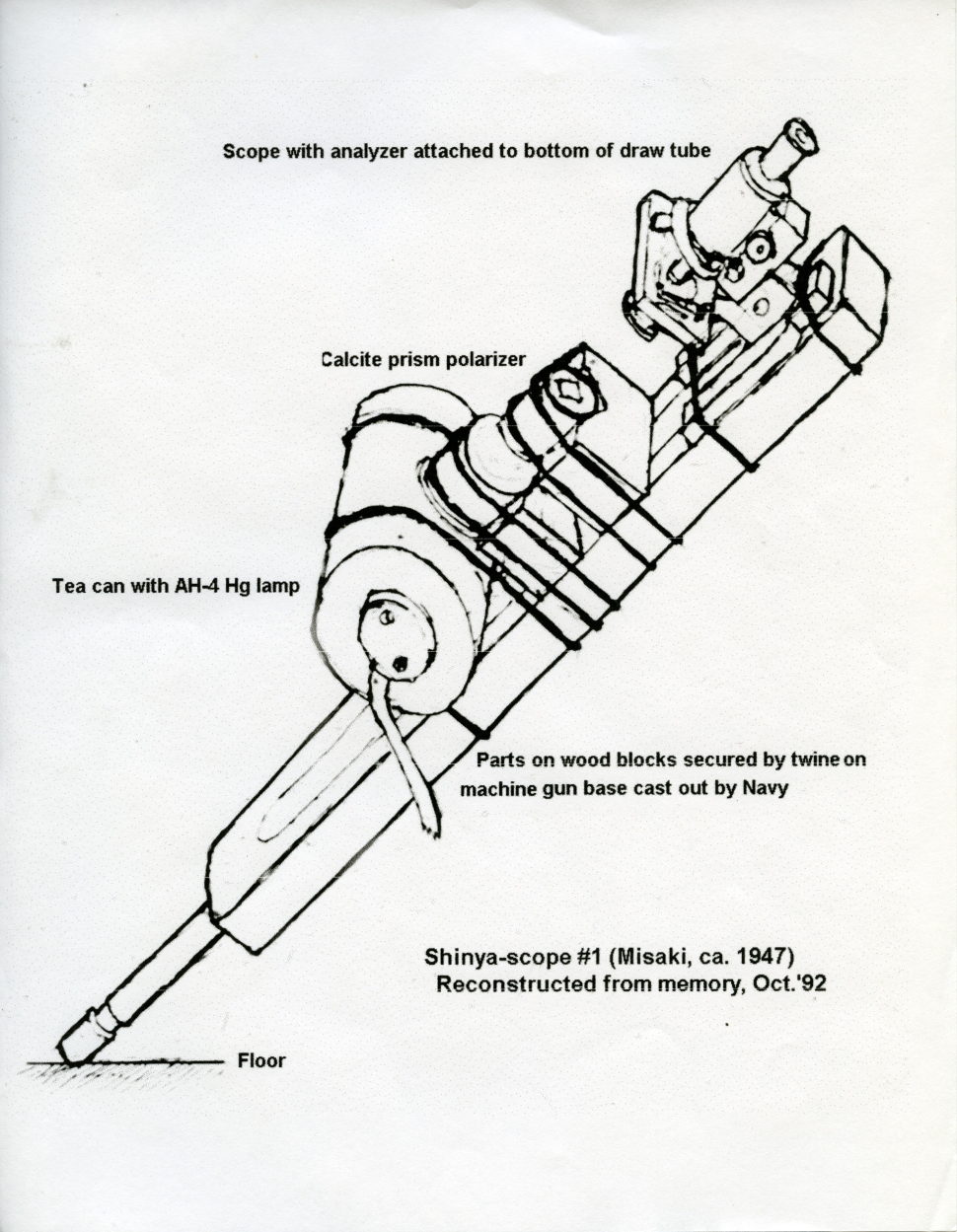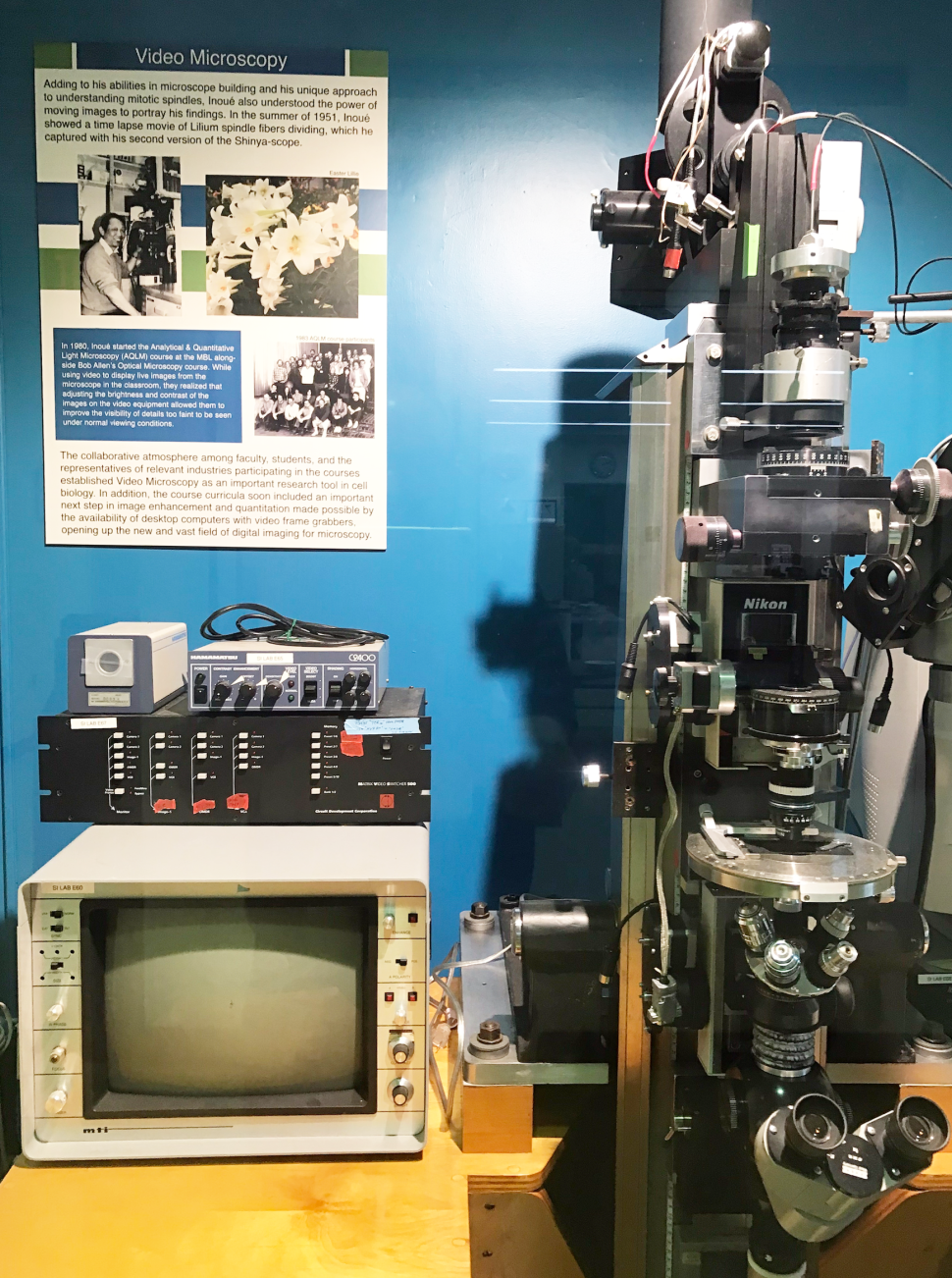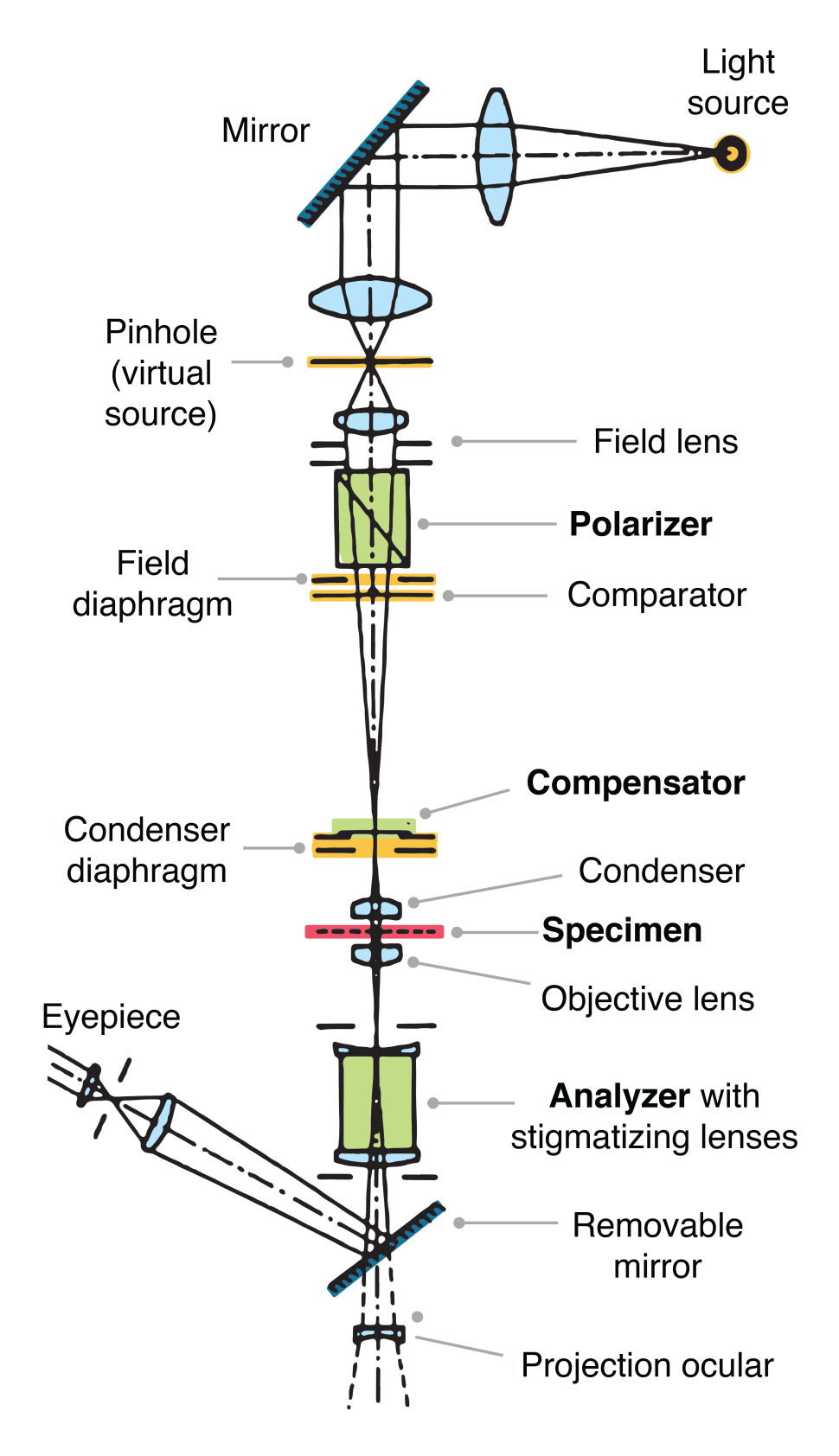Polarized Light Microscopy
 HoverTouch to magnify
HoverTouch to magnify
After World War II in Japan, Inoué began assembling a polarizing microscope using surplus materials. He learned through trial and error how to improve his scope to better view spindle birefringence.
Anticipating a visit from the Emperor of Japan, Inoué found a cast away machine gun part to use as a stand for his microscope, tying it together with string. It was the first Shinya-scope. Inoué continued to build and improve polarized light microscopes.
Inoué recognized how polarized microscopy could be used to visualize dynamic structures inside living cells without using chemical fixatives and exogenous labels for creating contrast. Using polarized light microscopy, he was able to demonstrate the existence of spindle fibers in the living cell, ending a long debate in cell biology.
Shinya-scope
A photograph of a later version of Inoué's polarized light microscope (left), and a diagram of its parts (right).
 HoverTouch to magnify
HoverTouch to magnify
 HoverTouch to magnify
HoverTouch to magnify
Modified from Inoué 20163
1. Still Image: "Shinya-scope 1 Drawn by Shinya Inoué, 1992", https://hdl.handle.net/1912/22639.
2. Photograph of microscope courtesy of Matthew Person.
3. Inoué, Shinya. Pathways of a Cell Biologist: Through Yet Another Eye. Singapore: Springer, 2016